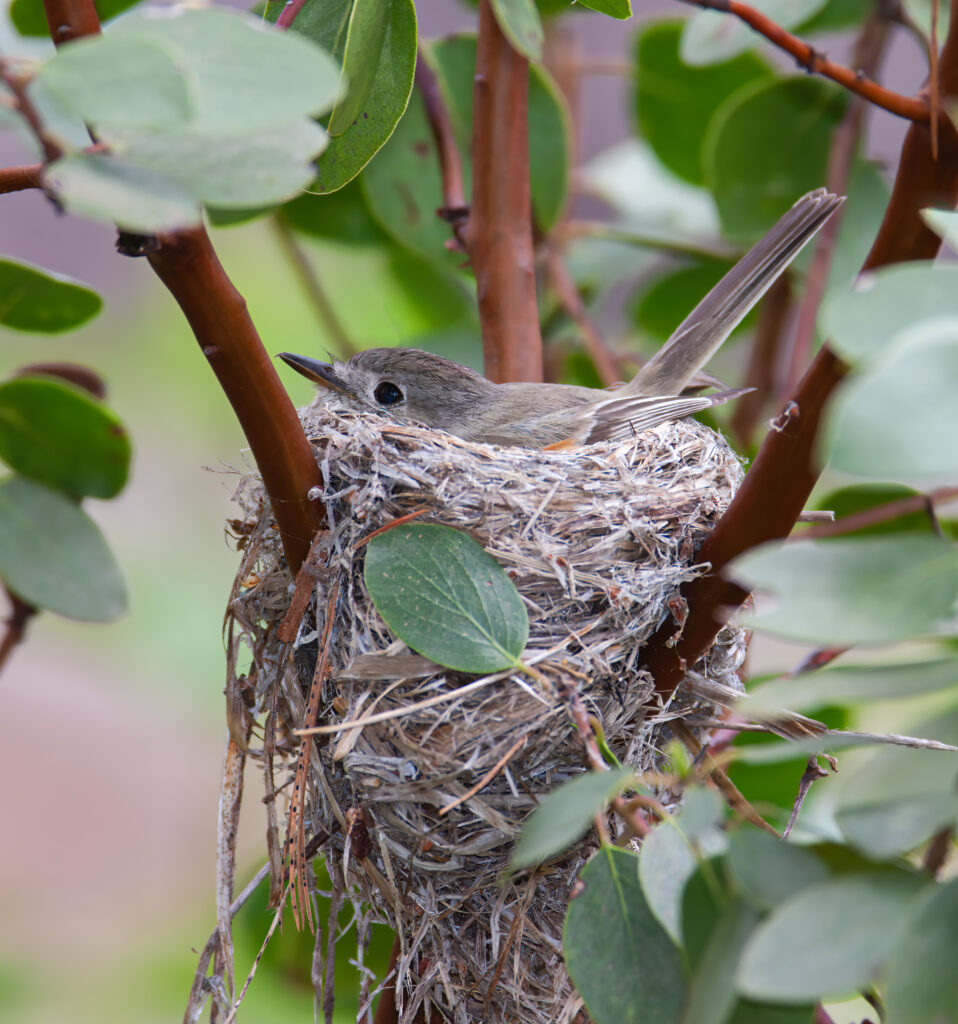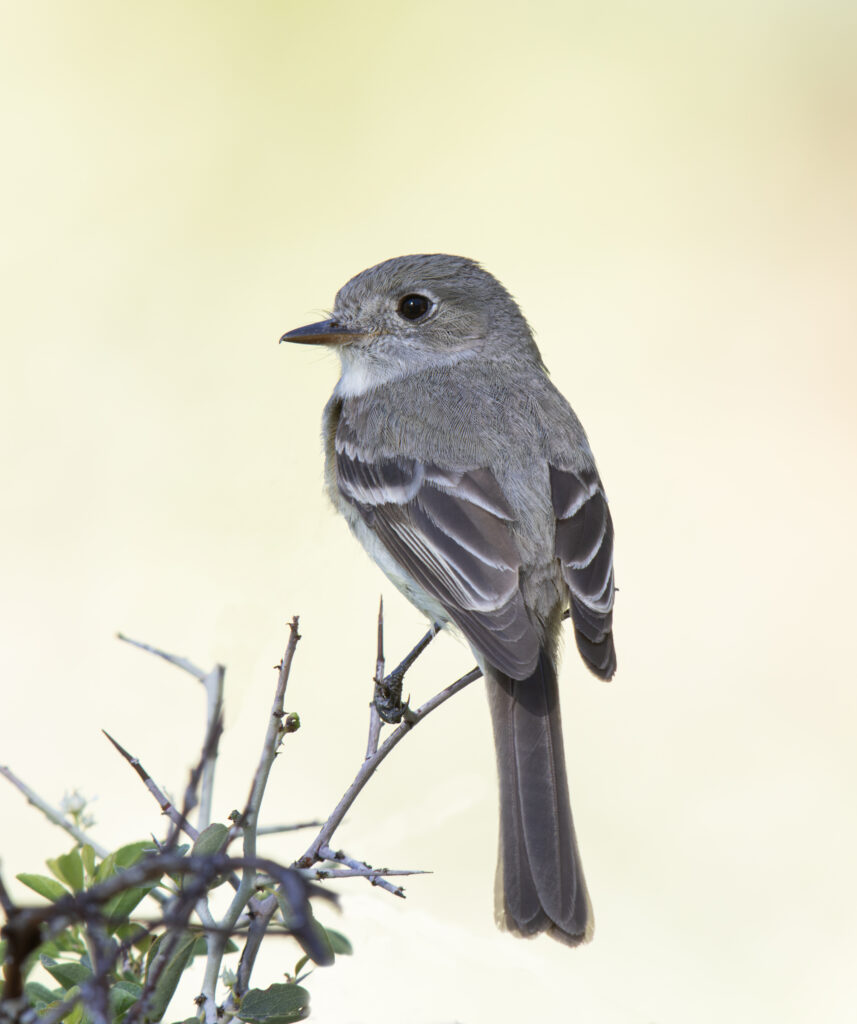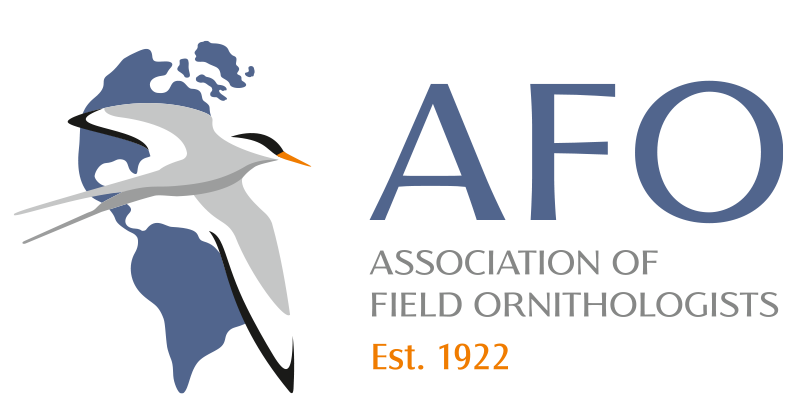Classical ecological theory suggests that two species cannot occupy the exact same niche when they co-occur. Where one species occurs alone, ecological release may lead to expansion or shifts in the ecological niche.
Two closely related and ecologically similar Empidonax species breed across an elevational gradient in the southern Sierra Nevada, California: Dusky Flycatchers (Empidonax oberholseri) and Hammond’s Flycatchers (E. hammondii). The two species coexist at lower elevations but only Dusky Flycatchers occur in high elevation forests. Hammond’s Flycatchers always nest in trees. Dusky Flycatchers nest primarily in shrubs where the two species occur together. At high elevations where only Dusky Flycatchers occur, they nest predominantly in trees. This apparent niche shift at high elevations prompted me to examine whether ecological release could be responsible for this change in their nest site location.

To address this question, we collected data on abundance and nest locations of the two species in four forest types across an elevational gradient in the southern Sierra Nevada. From low to high elevation, these forest types were ponderosa pine, mixed conifer, true fir, and lodgepole pine.
Dusky Flycatchers were most abundant in mixed conifer and lodgepole pine forests. Hammond’s Flycatchers were equally abundant in the three lower-elevation forest types and were not found in high elevation lodgepole pine forests.
Dusky Flycatcher nest success was higher when nesting in trees compared to shrubs and when nesting at higher elevations, suggesting potential fitness advantages related to ecological release. Hammond’s Flycatchers nests more successful when they nested higher in trees and at higher elevations.
However, a closer look at the nest locations of Dusky Flycatchers reveals a lack of evidence for ecological release. Even when nesting in trees Dusky Flycatcher nests were much lower than those of Hammond’s Flycatchers—they did not in fact occupy the nest site locations of Hammond’s Flycatchers. Also, Dusky Flycatcher were variable in their nest site selection. They didn’t always nest in shrubs at low elevations, and didn’t always nest in trees at high elevations.
The two species differ in habitat use and are thought to coexist through vertical habitat separation and differences in their general habitat preferences. Dusky Flycatchers are found in open brushy habitats with scattered trees while Hammond’s Flycatchers occur in mature forests with tall trees and an open understory.
The lower elevation mixed conifer forests where Dusky Flycatchers were abundant and nested mostly in shrubs had high shrub cover and shorter trees. Lodgepole pine forests at high elevations where Dusky Flycatchers nested primarily in trees had low shrub cover and the shortest trees.
Differences in abundance among the forest types and the nest site preferences of Dusky Flycatchers appeared to correspond to the habitat preferences of the two species, rather than interactions between the species related to competitive release.
These results provide important findings related to the habitat requirements of these two similar species and can help us understand potential threats to montane species, especially due to climate change. With the expected warming of montane landscapes, Hammond’s Flycatchers would likely find a lack of their preferred nest sites in tall trees if they were to move upslope. In light of the potential effects of climate change on the ability of species to survive and reproduce in a changing environment, we need to understand the ecological constraints and consequences of elevational movements.

Kathryn L. Purcell
USDA Forest Service,
Pacific Southwest Research Station
Coarsegold, CA
The results of this study were recently published in the Journal of Field Ornithology:
Purcell, K. L. 2024. Nest site selection of Dusky and Hammond’s flycatchers over an elevational gradient. Journal of Field Ornithology 95(4):7. https://doi.org/10.5751/JFO-00574-950407.
Header photo: Hammond’s Flycatcher (Empidonax hammondii) by Gary Woods – Enlarged in Canva Pro.
